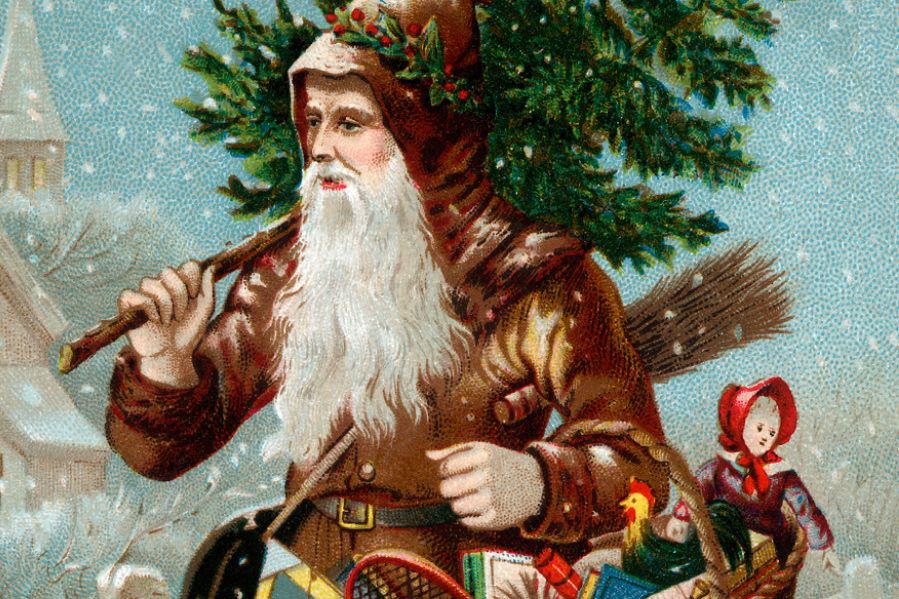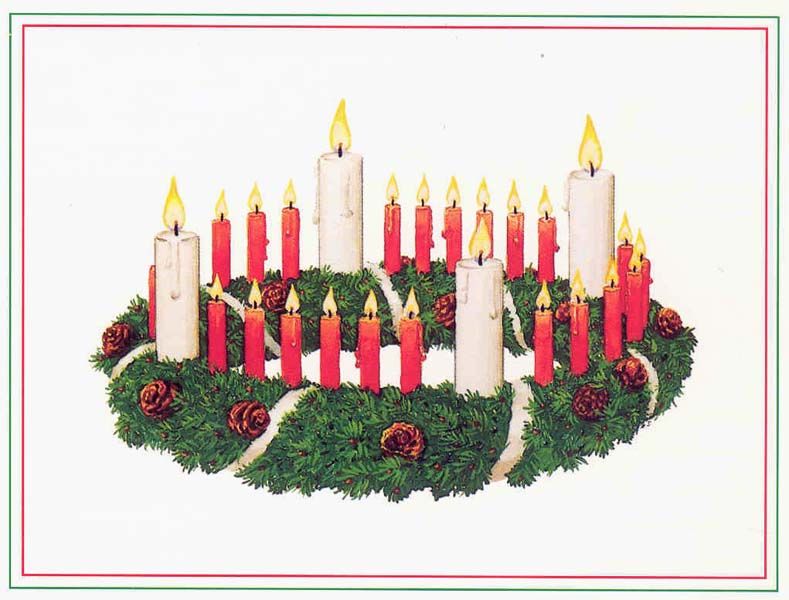
[This article was published by the Universal Life Church newsletter@getordained.org  and posted on November 20, 2022. I thank them for allowing me to reprint this article here.]
Christmas is often seen as a Christian holiday, but when you know the history, you’ll understand why this isn’t so. We need to give our ancestors the right to claim what was created by them. Some people call these ancestors “Pagans,” but I know they were/are our ancestors. I hope this article enlightens you.
“With Thanksgiving in the rearview mirror, many Americans are now excitedly preparing for the holiday season. Millions of Christians know this season as Advent (from the Latin word meaning “arrival”), where they spend the weeks leading up to Christmas preparing for the Nativity of Christ.
Wreaths, trees, candles, advent calendars… these are all symbols intertwined with Christmas even to non-Christian observers. But did you know they actually have ancient symbolic meanings that go beyond Christianity?
In fact, many of these symbols are, ahem, “borrowed,†and you’ll never guess who from.
Okay, you got it. Pagans (Ancestors). It’s always the pagans.
A Very Pagan Christmas
You might recall that Christmas itself has some distinctly pagan origins, and that many of the modern Christmas traditions can be traced back to ancient Nordic cultures.
Long, long before Christianity, pagans were celebrating the winter solstice and the end of the harvest season. This was called Yule, and many ancient Yule traditions – singing, bonfires, feasting – are still celebrated today. Still, some, like dousing oneself in the blood of sacrificed animals, didn’t make it to the 21st century.
When you think about it, it makes sense that many Advent traditions are lifted from ancient pagan customs. After all, wreaths, trees, and candles make a lot more sense in a pagan context than in a Christian one.
Centuries-Old Symbols
Mistletoe is a great example of this. For centuries, mistletoe was closely associated with the Norse love goddess Frigga. As a gesture of peace, Nordic warriors used to hang a bough of mistletoe and lay down their weapons underneath of it when they came together for peace talks. As you’re surely familiar, we do something slightly different under the mistletoe now – but the core idea lingers!
Many historians also believe the classic Yule log could have some Pagan connections. It’s unclear exactly when or where the tradition was started, but research has shown that prior to the Yule log being brought into the house and burned by German Christians, yule logs were often burned around the solstice as a symbol of the sun’s warmth, and the ashes scattered across fields as the pagan people believed it would increase the abundance of their next harvest.

Another example is the Advent wreath. An iconic Christmas decoration made of fir branches, decorative ribbons, and holly strung together in a circular shape.
Believers place candles on the wreath and light them throughout Advent, symbolizing Christ’s endless and everlasting grace and love.
While Christians have been making wreaths and lighting candles for centuries, this tradition actually traces back to paganism. In the dark, unforgiving Scandinavian winter, pagans would light candles and place them around a wheel in an appeal to the gods for warmer days ahead, particularly around the winter solstice as a plea for the sun to return.
And long before the circle of the wreath came to symbolize Christian eternal life, it was embraced by many pagan people as a symbol of protection. Some historians even believe hung on doors.
So Advent wreaths and Advent candles are taken from ancient pagan traditions. But what about the season’s most recognizable decoration?
An Evergreen Holiday
Sorry, even the iconic Christmas tree isn’t a Christian original. Evergreen trees were used as a winter solstice decoration thousands of years before Christianity, and ancient pagans decorated their temples with fir branches and their homes with fir trees.
Why? Fir trees represented fertility (of both human and earth) to many ancient European cultures, as did the first ‘Christmas tree decorations’ – flowers, nuts, and fruits.
In fact, when you boil it down to the essentials, just about everything was about sex, warmth, or food. Maybe some things never change.
As it turns out, Christmas trees as we know them now didn’t really exist until the 16th century, when German nobility started decorating royal courts with them, complete with a golden leaf on top.
As late as the 1800s, Christmas trees were viewed as a pagan custom by some cultures – including by many people in the United States. That, of course, has changed.
It turns out even gift-giving could have a connection to some ancient faiths! While many link the annual giving of gifts at Christmas to the story of the 3 Wise Men bringing gifts to the infant Jesus, historians have made an even older link with the ancient Roman festival of Siggilaria.
While the festival was originally set up so that people could visit the market to buy small pieces of pottery with candles in them (called sigilla) as an offering to the god Saturn, over time the festival grew and as the Romans became more wealthy they started buying and selling gifts for one another at the Siggilaria market.
Old Gods and the New
And of course, the entire Advent season culminates in Christmas on December 25th. By now, you surely aren’t surprised to learn that even that particular date has some Pagan connections!
December 25th, history teaches us, was initially selected as the date for Christmas each year because it was also the date that many ancient people had for generations celebrated the re-birth of the god of the sun, Sol.
The early Catholic church figured that by sliding in the birth of the Son of God on the same day as the birth of the God of the sun, it would be a cinch to get people to start celebrating the newer Christian holiday. It took a few years and some occasional chastising from early popes, but eventually, most people got the message and transitioned over.
So this Advent season, as you’re hanging the wreath, lighting the candles, and decorating the tree, take a moment to acknowledge how holiday traditions have evolved. These customs we hold so dear grow, change, and even merge with one another over time.
Much has changed during the past millennium, but by the same token, much has also stayed the same – it’s simply been repackaged.”
Seasons Greetings from the Never Give Up Institute!
_____________________________
Alexis Acker-Halbur is an award-winning author and medical miracle. Child abuse made her seriously ill and put her in harm’s way many times. She survived and shares her experiences and tools with women and men who have been traumatized.Â
